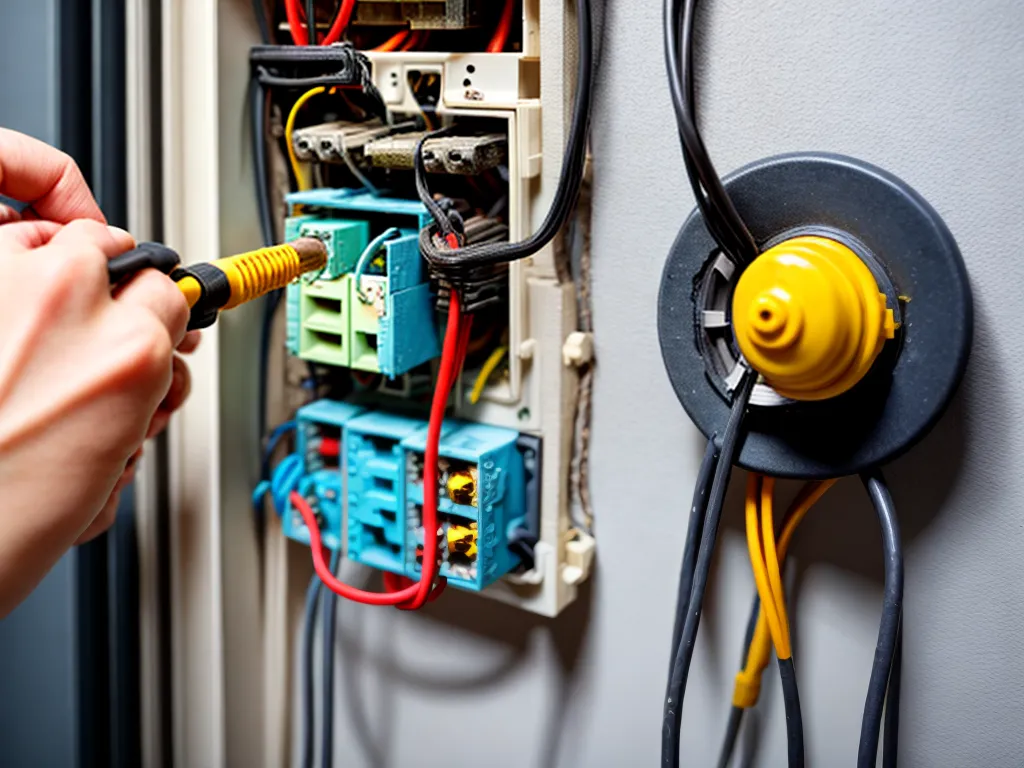
Knob and tube wiring was commonly installed in homes built before 1950. This old electrical system consists of insulated wires run through open air, supported by ceramic knobs and tubes. While it was suitable for the electrical needs of the time, knob and tube wiring can be a serious safety hazard in modern homes. Upgrading from knob and tube is the best way to protect your home and family from electrical fires and shocks. However, some homeowners try to improve the safety of knob and tube systems through partial upgrades or repairs. Understanding the risks and limitations of these measures is essential.
Dangers of Knob and Tube Wiring
Knob and tube wiring has major drawbacks compared to modern electrical systems:
- Fire hazard - Insulation on old wiring often deteriorates, exposing live wires that can arc, spark, and ignite fires. Knob and tube lacks grounding, increasing risk.
- Shock hazard - Deteriorated insulation also raises the chances of electrical shock. Grounded systems provide an escape path for current to prevent shocks.
- Insufficient for modern loads - Lighting and appliances require much more power now. Knob and tube can be overloaded beyond safe limits.
- Difficult to maintain - Accessing wiring in walls is extremely challenging with knob and tube. Problems often go undetected.
These inherent flaws make knob and tube wiring unsafe by today's standards. Let's examine some common approaches to improving safety without removing all knob and tube wiring.
Partial Upgrades
Some homeowners try to reduce risks by upgrading some circuits but leaving knob and tube in place elsewhere. This helps but is not a complete solution.
Upgrade High Load Circuits
One approach is upgrading circuits supplying major appliances and devices with high electrical loads. This reduces overloading risk on those circuits. However, it leaves lower load circuits still vulnerable. Arcing faults can occur on any old compromised wiring.
Upgrade Accessible Areas
Another tactic is replacing knob and tube that's easily accessible in basements or attics but leaving inaccessible wiring in walls intact. This improves safety in upgraded areas but most wiring is hidden in walls. So key risk areas remain.
Add GFCI Outlets
Installing GFCI outlets on knob and tube circuits adds some protection from shocks. However, GFCIs can't prevent wiring fires. Arc faults will still occur, potentially leading to dangerous ignition sources.
Repairing Knob and Tube Wiring
Rather than partial upgrades, some attempt to repair knob and tube wiring to extend its life. However, repairs have limited effectiveness and can create new hazards.
Splicing In New Wiring
It's possible to splice in new copper wiring to replace damaged sections of old knob and tube conductors. But this splices old and new wiring together, retaining many original risks. Deterioration can continue in undiscovered areas.
Capping Off Open Splices
Exposed splices are major hazard. Capping wires with wire nuts or electrical tape seems an easy fix. But it fails to address underlying deterioration issues that led splices to become uncovered. Capping just hides symptoms rather than fixing core problems.
Insulating Bare Wires
Similarly, covering damaged, exposed sections of insulation with electrical tape does not provide reliable protection. New insulation slowly loses effectiveness with age, heat, and arcing. The underlying wire degradation still threatens safety.
Full Replacement is the Only Reliable Solution
While understandable, partial upgrades and repairs cannot provide comprehensive, lasting safety improvements on knob and tube wiring. Full replacement with modern wiring and grounding is the only reliable solution. Though difficult and costly, this investment protects what matters most - your home and family. Carefully weigh the risks before settling for quick fixes or halfway measures when it comes to knob and tube hazards. Your family's safety is precious and priceless.